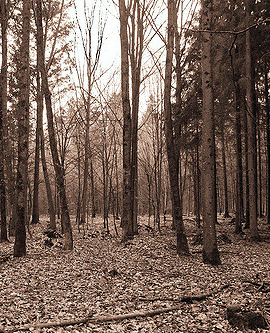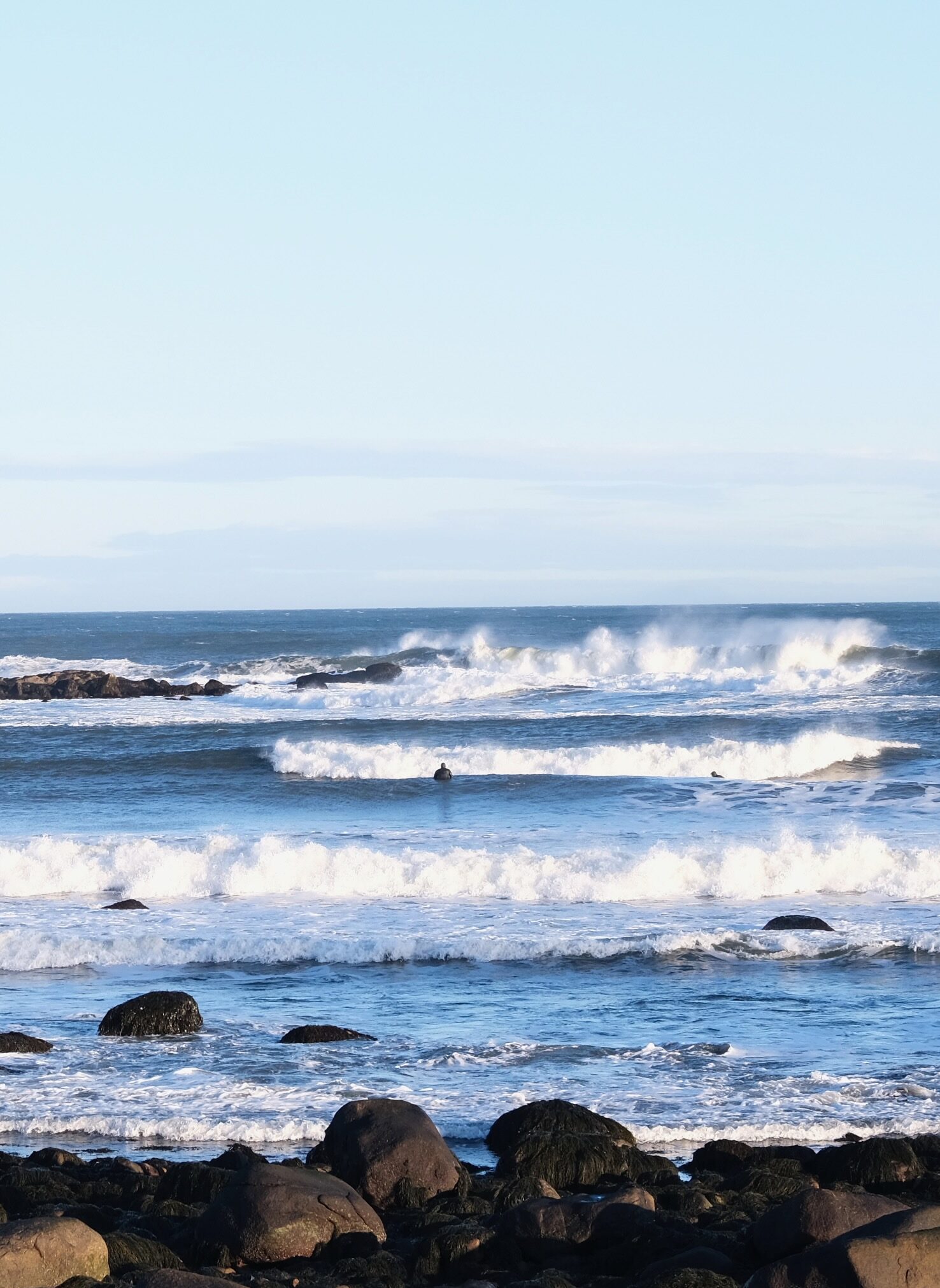
The day is drab and cloud-soaked, the sky a quilt of gray. I take the dog to walk on a path beneath the power lines near our house. Although it’s the first of February, there’s no snow. Everywhere I see brown, tan, dull green. Overhead the lines buzz and pop, the towers that carry them straddling undulating hills.
At the foot of the first hill the dog and I encounter a deer gutted and left by a hunter: forelegs with delicate hooves, a spine gleaming like piano keys, and clumps of brown and gray fur. Nearby rests a blue disposable glove and some frayed webbing. The hunter couldn’t be bothered to dump the carcass a few feet into the woods, instead leaving the offal on the bank of a small stream. Tire tracks from an all-terrain vehicle are gouged into its muddy lap.
Leaping across the water, I avoid the deep mud. The dog runs ahead, nose to ground. Leaning forward into the next ascent, I consider the carelessness of leaving animal remains near water. The singularity of thought depresses me.
At the top of the hill, I look out over the gentle descent into a wide, flat bottomland that stretches to the next utility tower and beyond. The landscape mirrors my mood: sepia-washed acres of scrubby thorns, flattened grasses, spiked dried stalks, gray milkweed husks. The air is still, the cold metallic in my nose. I can do this, I think, I can find something of beauty or interest out here. Almost immediately, a flash of scarlet crosses the path ahead, a male cardinal whose coat pops. Just as quickly he’s gone.
Midway up the next hill the blue glove’s twin lies crumpled in the path and a few feet farther, a Budweiser can.
When I reach a paved road, I turn for home. On my return, I deviate from the main route to follow a mowed path to the woods. Walking along where forest meets field, I scan the woods for color or movement. Each tree is a straight-backed figure with no story to tell. But further along, I spot a tree that has decayed most of the way to the ground, leaving behind a five-foot spire. Holes poke daylight through the spire like swiss cheese, the base of the trunk crumbly. I consider the combination of moisture, wind, and insect habitation that would create this sculpture. The oppressive weight begins to lift from my consciousness.
I notice a small, off-white egg shell in the grass at my feet. Picking it up, I roll it in my palm, noting its leathery surface covered with fine protruding dots like sandpaper. Presumably a baby bird tapped its way out of the hole in one side. The opposite side is cleaved open from hitting the ground. The shell wall is thick, though, so I wonder whether it instead incubated a snake. Either way, this home is abandoned. I slip it into my pocket, another curio for my collection.
Amanda A. Gibson is a lawyer who has worked for the Environmental Protection Agency and the Maryland agricultural land preservation program. Raised in Connecticut, she lives with her husband and two children in southern Maryland. Her work has appeared in Under the Gum Tree, Little Patuxent Review, and is forthcoming in The Sunlight Press.
Photo by Flickr Creative Commons user SrdjanMatejic




